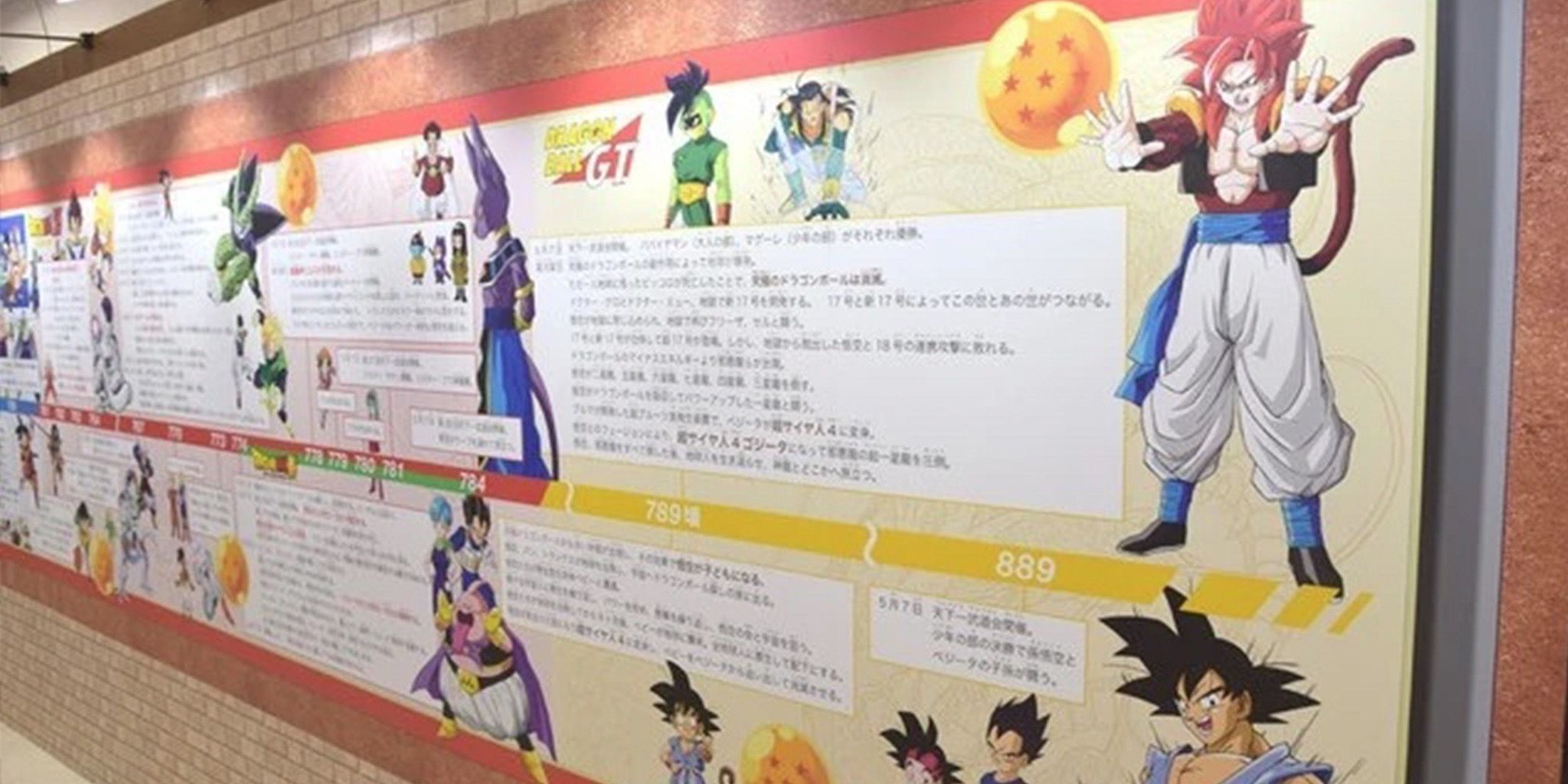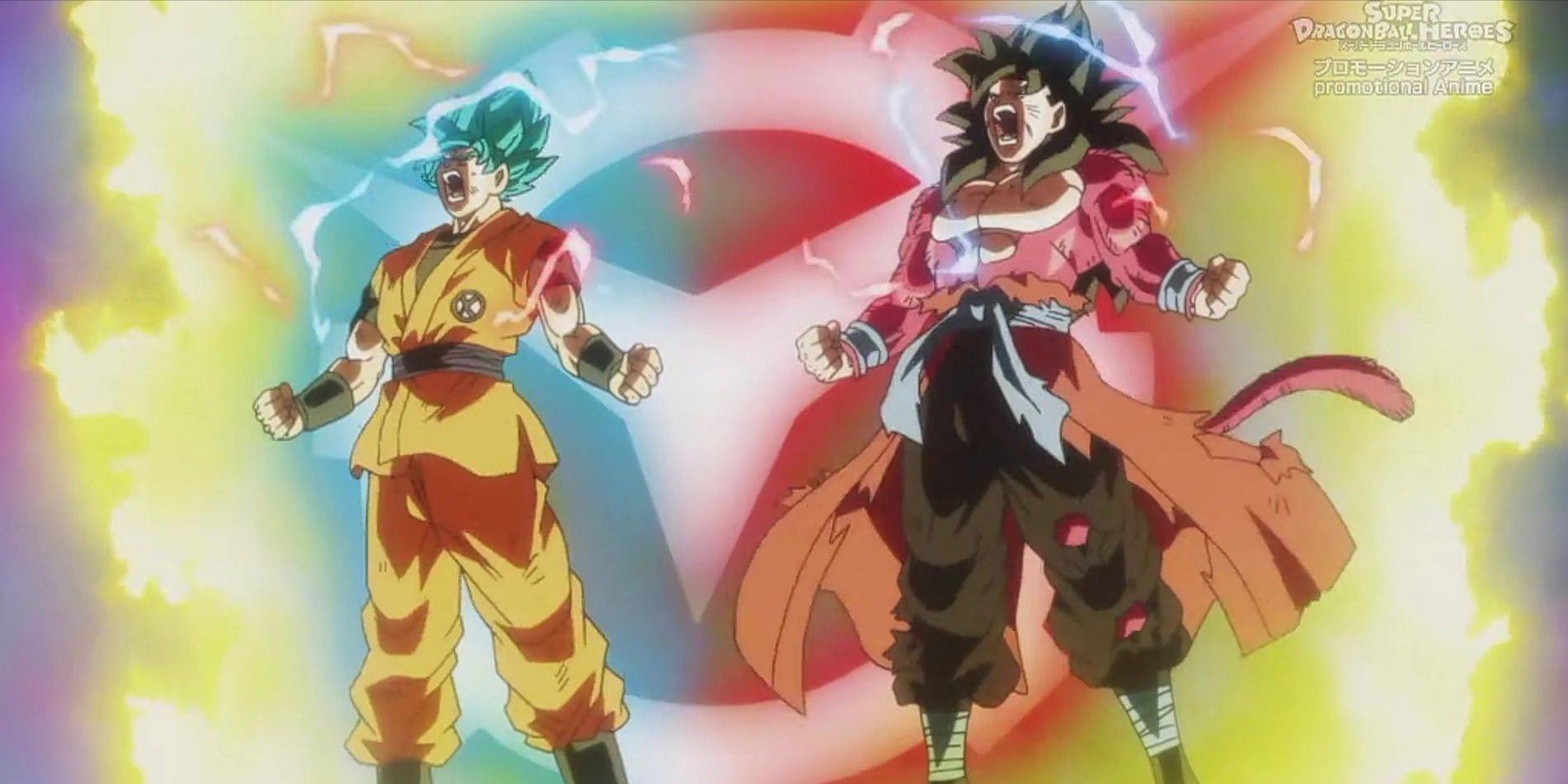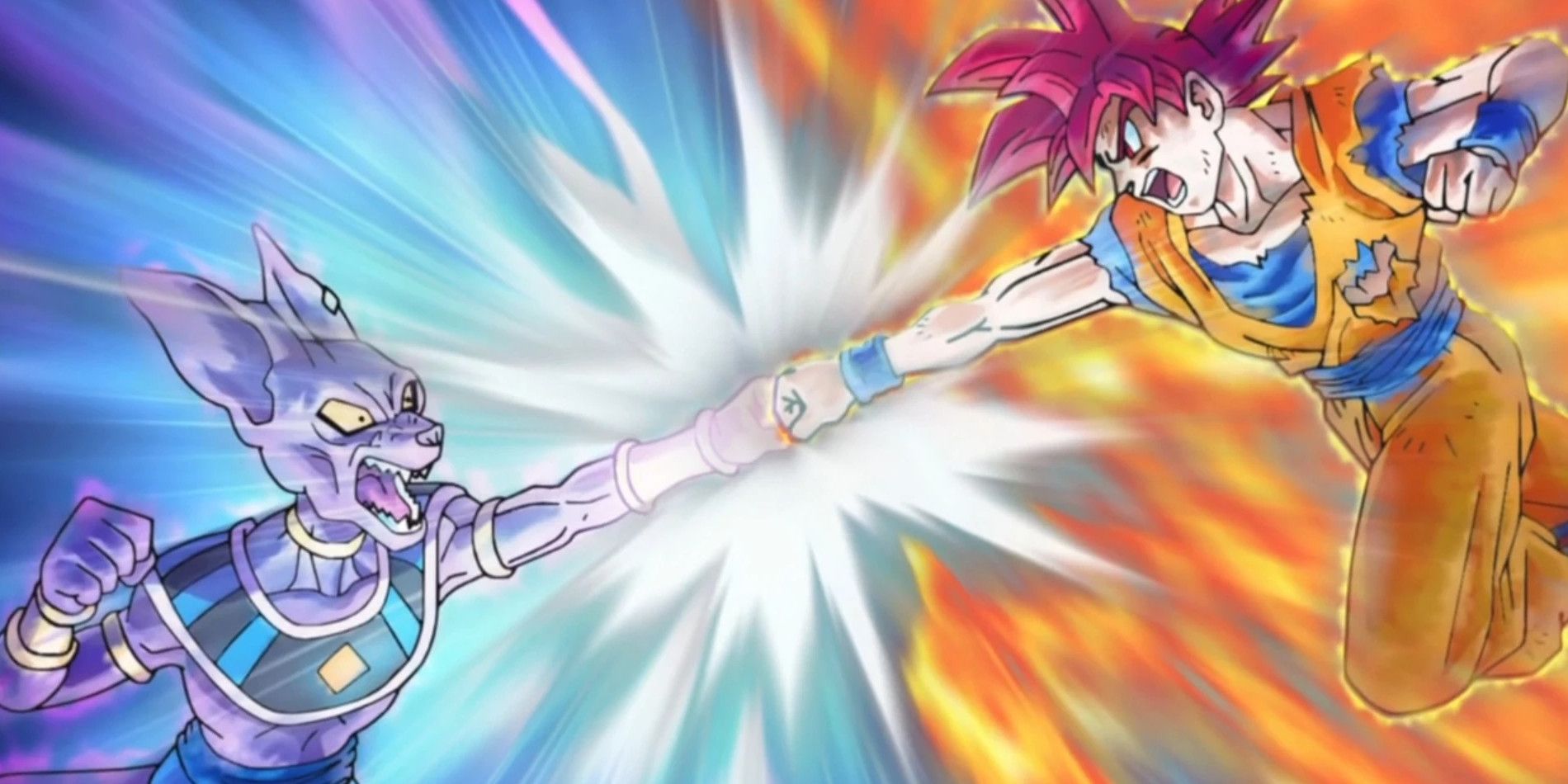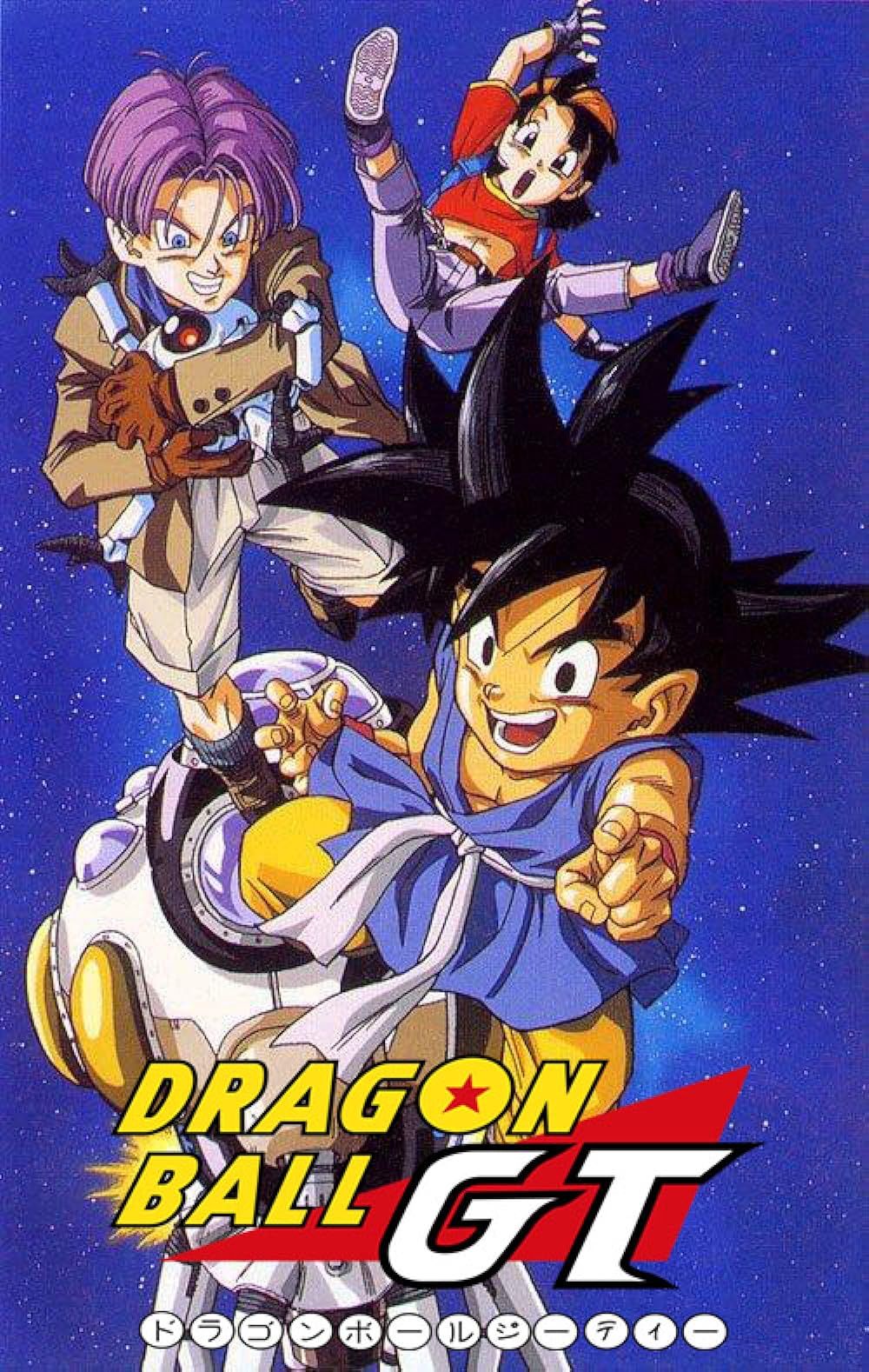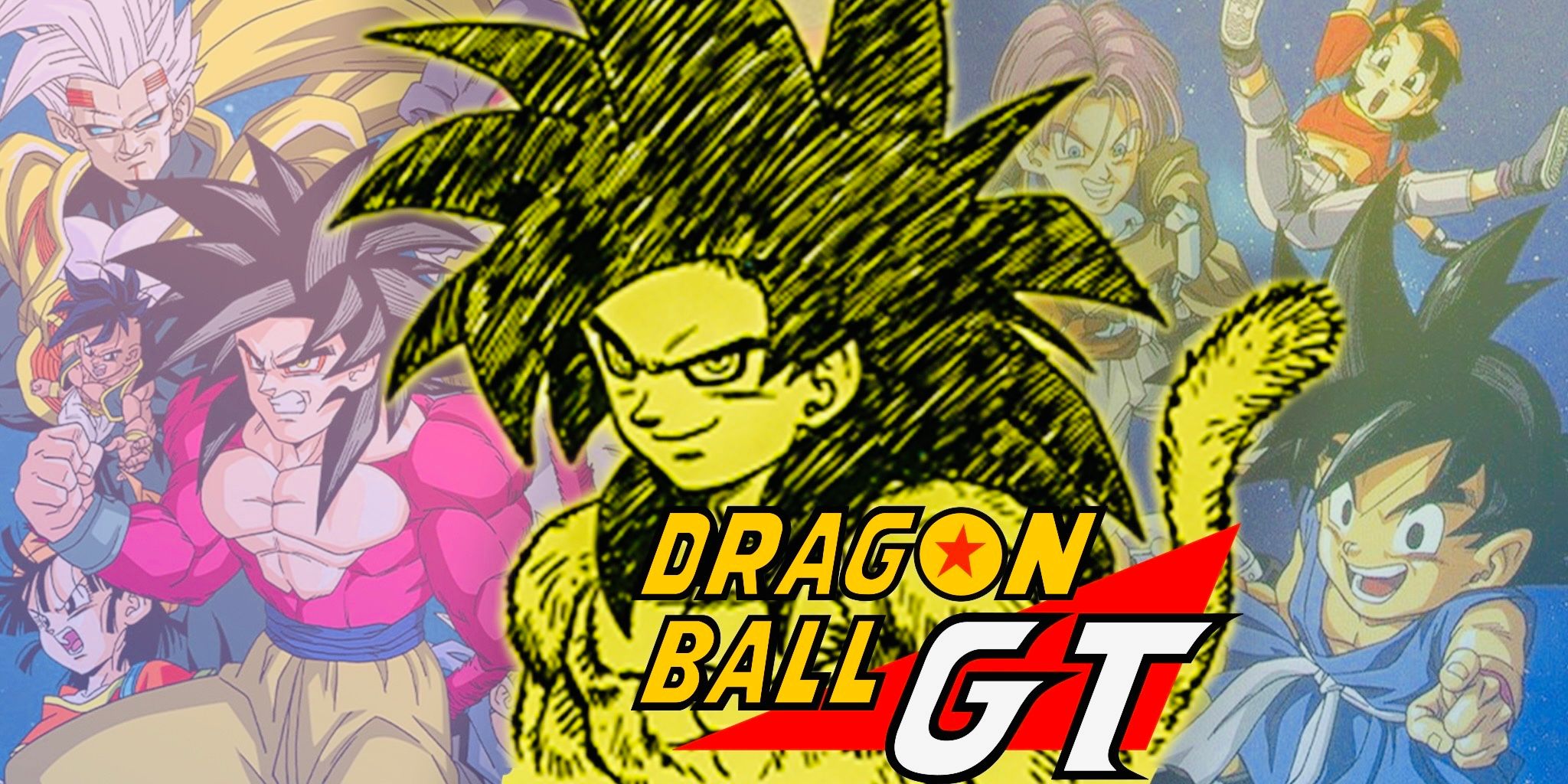
The question of Dragon Ball GT’s canonicity is as old as the hyperbolic time chamber itself. Even before Super was released and completely upended the continuity of GT, the fact the series wasn’t a part of Akira Toriyama’s original manga, and its story wasn’t directly created by him, led most fans to consider it as an entirely separate timeline. Even so, diehard GT fans have still sworn by the fact that the series is canon despite all evidence pointing to the contrary – until now.
Recently, Shuiesha’s Dragon Ball timeline, which includes GT at the end, resurfaced online, causing many fans online to insist that GT is now officially confirmed to be canon. There’s no denying this is the best argument yet for the series’ canonicity, but unfortunately, it’s far from a shocking revelation. There are still plenty of reasons to conclude that GT isn’t canon just yet, and Shueisha’s timeline hasn’t done anything to change what’s been definitively known about Dragon Ball’s actual timeline continuity for years.
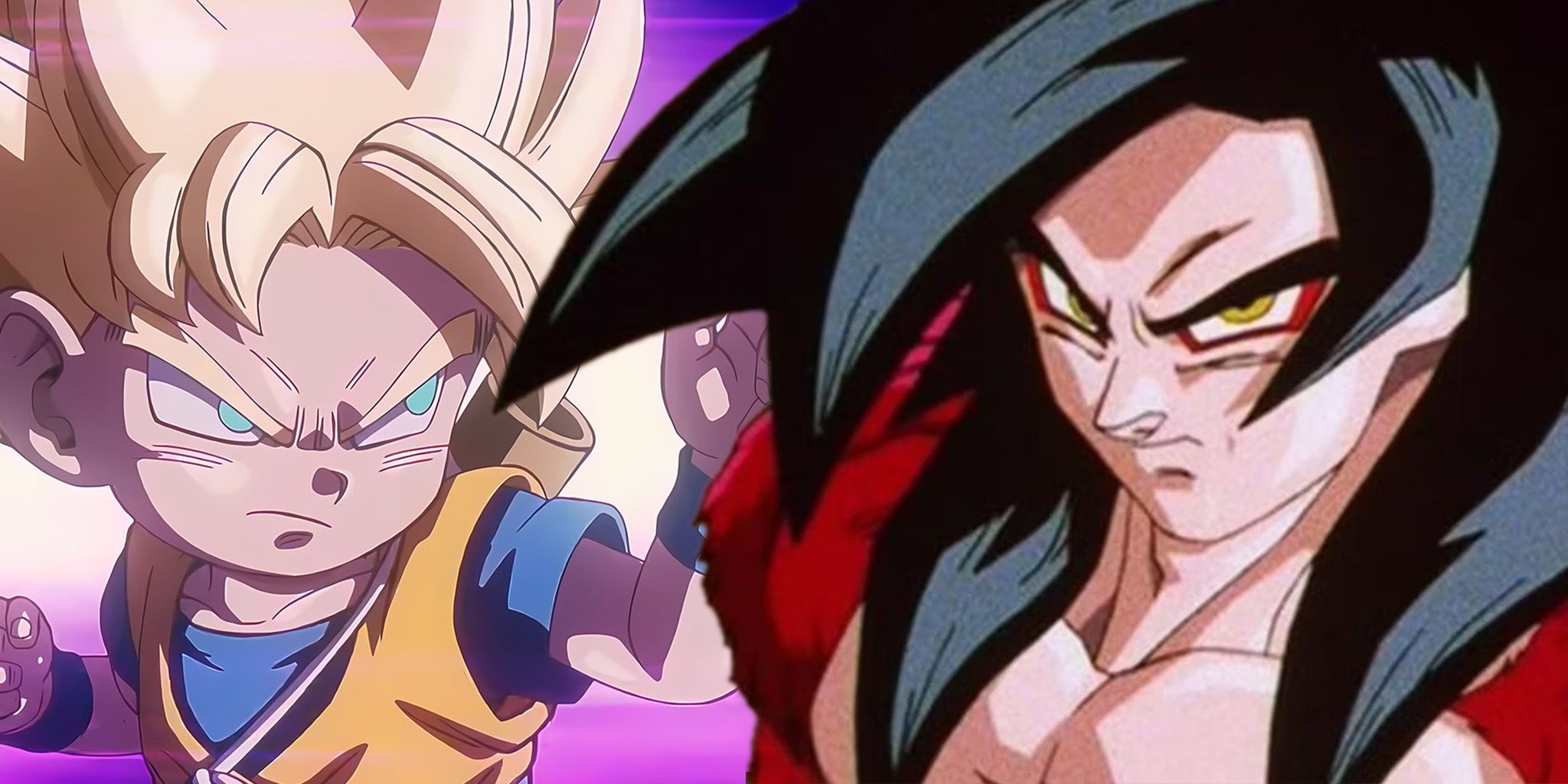
Related
Will Dragon Ball DAIMA Finally Make Super Saiyan 4 Canon?
Dragon Ball DAIMA already took a cue from GT in making Goku a kid again, but could it take a step further by introducing SSJ4 into the main timeline?
How the Shueisha Timeline Seemed to “Officially” Confirm GT Was Canon
Unfortunately, Shueisha’s Timeline Didn’t Tell DB Fans Anything They Didn’t Already Know
The biggest catalyst behind the recent insistence on the “official” canonical status of GT is due to the “new” Dragon Ball anime timeline revealed by Shueisha. This timeline is actually not technically new at all, though; it was posted all the way back in 2017 at an event in Japan called Dragon Ball Tenkaichi Budosai. The reason this became relevant again is because an image of the timeline taken at the event was posted and spread online sometime around 2022, and then again as recently as March 2024.
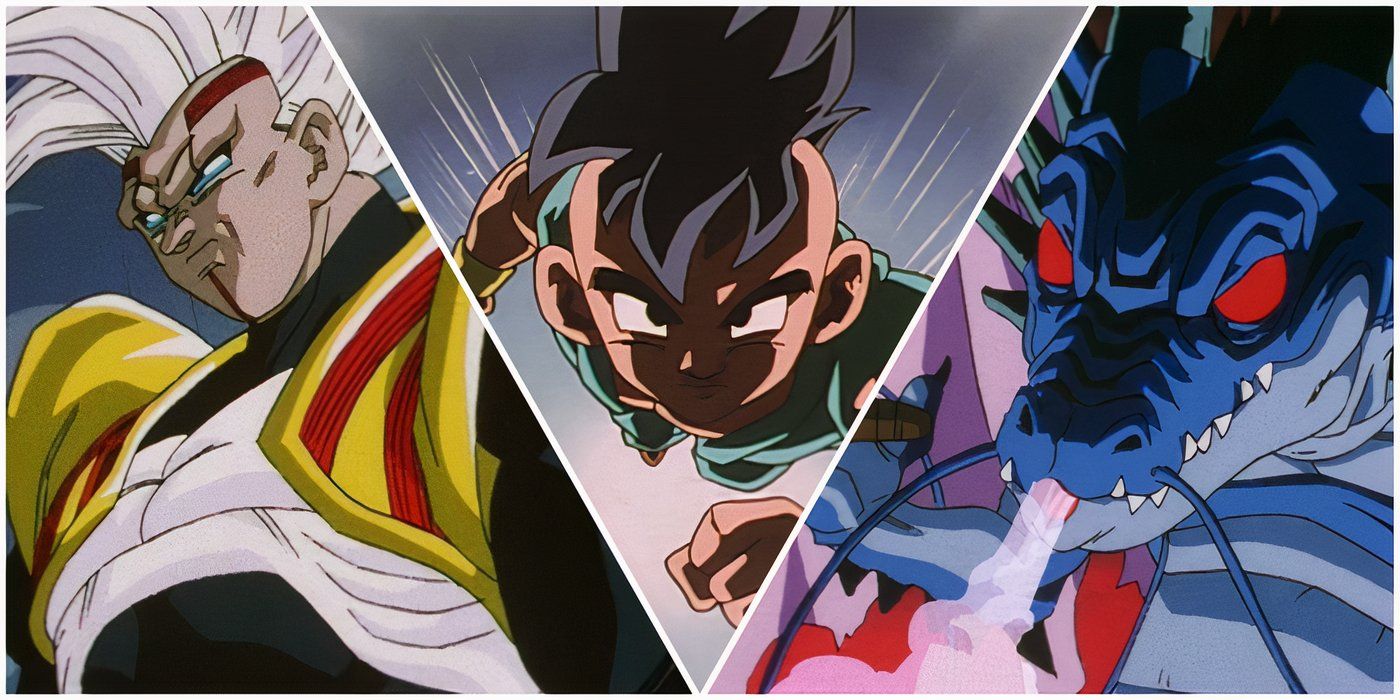
Related
10 Dragon Ball GT Storylines That Are Way Better Than You Remember
Dragon Ball GT remains a controversial entry in the franchise, but it has a fair share of misjudged storylines that deserve more love.
Importantly, Shueisha is the parent company of Shonen Jump, the magazine in which Dragon Ball was first published. This gives Shuiesha’s word on the matter a particular perception of weight to most fans. The 2017 Shueisha timeline depicts the entire events of the original Dragon Ball series through DBZ, and also includes Dragon Ball Super as occurring prior to the final Peaceful World Saga of DBZ. This is all to be expected, as it in no way conflicts with anything fans knew about the series’ canon before. However, the biggest shock of this new timeline was that it includes Dragon Ball GT at the very end.
The inclusion of GT in the timeline shouldn’t be ignored, but it doesn’t particularly change anything fans know about the series, as GT was always meant to take place after DBZ. The only thing that makes this version of the timeline important is that it’s presented by the original publishers of Dragon Ball. Placing GT in the same continuity as Dragon Ball Super might look like a bold move by Shueisha, but it should be by no means shocking to veteran fans of the series. After all, Shueisha still owns partial rights to the Dragon Ball IP, including GT, so the company has a vested interest in acknowledging it alongside the other entries in the franchise over the years. In that sense, it’s no surprise that Shueisha would want to acknowledge GT in its timeline, but this acknowledgment is certainly not the canon-changing revelation that many have suggested it may be.
What Toriyama Has Personally Said About GT Being Canon
Dragon Ball’s Creator Has Only Made One Brief – Admittedly Ambiguous – Statement on GT’s Connection to His Manga
Shueisha’s new timeline has understandably made waves among the Dragon Ball fandom, but it should by no means be seen as the final word on the issue of GT’s canonicity. The final word on the issue should really go to the person who actually created the story: Akira Toriyama. In the Dragon Ball GT DVD box set Dragon Box GT “Dragon Book”, Toriyama wrote a message in which he touched on his involvement in GT. In it, Toriyama referred to GT as “a grand side-story of the original Dragon Ball”. This is the only time Toriyama has referenced GT’s relationship to his main story, but it’s a particularly telling turn of phrase.
Many fans have interpreted this title of “side-story” to mean that GT takes place in an alternate universe apart from his main story, and that’s likely the correct interpretation. This wouldn’t just mean GT was an alternate universe in the multiverse introduced in Dragon Ball Super. Instead, it would mean GT takes place in an alternate fictional universe that’s disconnected from the canon of the series he created. If all side-stories were canon, it would infer that all DBZ films should also be considered canon – just taking place in alternate universes and timelines.
Being a lazy bum by nature, I was absurdly happy when I managed to safely finish up Dragon Ball’s serialization, and finally be released from Deadline Hell. The TV anime people wanted to continue for just a little bit more, but I [just couldn’t do] any more than that… And so, I left the Dragon Ball anime completely up to the anime staff, story and all. That was Dragon Ball GT. (
translated via Kanzenshuu
)
Notably, this term “side-story” differs greatly from how Toriyama explained his newest Dragon Ball anime project, DAIMA, when it was first unveiled. In the official statement he released, Toriyama stated in a straightforward manner, that “things will unfold that close in on the mysteries of the Dragon Ball world.” This doesn’t call anything into question about canonicity, because Toriyama outright states that DAIMA expands on the lore of Dragon Ball he created. Unlike his statement about the “side-story” of GT, there was no ambiguity in whether DAIMA connects to his original series.
Sadly, as ambiguous as Toriyama’s statement on GT was, it’s all anyone will ever have to go on from the man himself. Not only that, but Toriyama never commented on Shueisha’s timeline directly after it came out in 2017. Now that he’s gone, the most that fans will get to hear of Toriyama’s feelings about GT may be through his final work on the currently airing new Dragon Ball anime series, DAIMA. If Toriyama truly wanted GT to be canon to the mainline series, DAIMA would be the perfect place to further introduce elements that could help GT fit better with the continuity of Super.
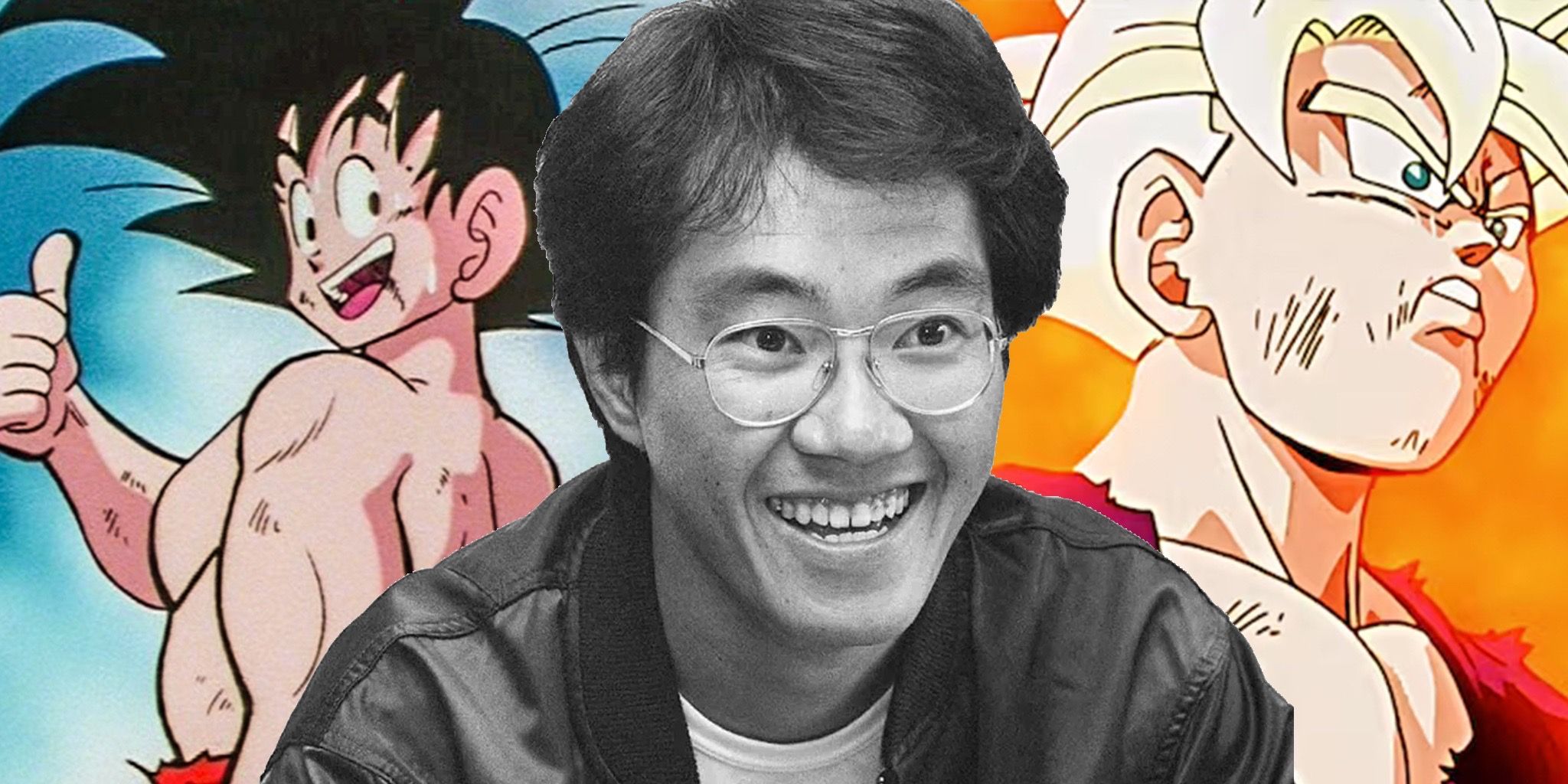
Related
10 Times Akira Toriyama Changed His Mind Writing Dragon Ball
Akira Toriyama’s off-the-cuff writing style led to many dramatic changes to Dragon Ball’s lore and characters the series wouldn’t be the same without.
DAIMA has already retconned previous aspects of the series and even introduced new lore elements that will have a major impact on how fans see the series going forward. If there were any last comments Toriyama had about how GT fit into his personal version of the story, DAIMA would be the place for him to flesh them out. However, it’s also worth noting that DAIMA still takes place before Super in the series’ canonical timeline, so GT would still have to contend with Super even if DAIMA introduced an aspect of lore that coincided with something in GT.
What Canon Actually Means And Why it Can’t Be Applied to GT
GT Doesn’t Quite Fit the Definition of “Canon”
Fans have argued about whether GT is canon for decades, so the discussion is unlikely to be settled anytime soon. Part of the issue is that the word “canon” can sometimes get muddled, because its use by fandoms is often not very precise. In a case such as that of GT, it’s worth defining what canon actually is. The word “canon” is derived from the Greek word kanōn, meaning “rule.” In the most basic sense of the word, canon is the “rule” rather than the exception.
In academia, the word canon is often used to refer to holy scriptures that are seen as the “true” works of scripture, as in “the biblical canon.” This term has come to be extended into fiction fandoms to mean something quite similar: the “sacred” and genuine pieces of literature that make up the true work of said fictional universe. This is especially important in series with many spin-offs and fan fictions, because fans often want to differentiate between what is genuinely the work of the creator in the universe they intended, and what is an off-shoot of that universe created by someone else. In other words, the rule instead of the exception.
In this sense, Dragon Ball GT can never be considered genuinely canon, because it’s not a work that the “God” of the Dragon Ball Universe, Akira Toriyama, personally created. While he did give some input into concepts and character designs, he had very little actual input into the series – and that was entirely by choice. According to Toriyama himself:
In GT, the only contributions that I made were the title, the initial main character designs, some of the mecha designs, and a number of image cuts.
If canon is considered a work that is a “true” part of the series, it should at the very least be crafted by the actual creator of the series. Unfortunately, as Toriyama said himself, he didn’t put very much into the production of GT, instead choosing to leave “everything, including the story, up to the people on the anime staff.” This is in contrast to his work on other, more recent series, like Super and DAIMA. Toriyama was heavily involved in the writing, character designs and concepts in both Super and DAIMA, making them the most definitely canon pieces of Dragon Ball media to date other than the series’ original run.
No Matter What Shueisha Says, GT Doesn’t Fit Into The Story Toriyama Personally Wrote
Shueisha’s Timeline Just Further Emphasizes How GT Doesn’t Fit Into Dragon Ball’s Mainline Story
Shueisha has every reason to consider GT canon, because they partly own the rights to it. It makes sense that GT would be included in a timeline meant to depict where each of the main Dragon Ball anime series have taken place in regard to the series’ continuity. However, Shueisha has no skin in the game if GT doesn’t technically fit into the actual storyline created by Akira Toriyama. In fact, by including GT at the end of the timeline, Shueisha inadavertantly perpetuated the issues that fans have had with considering GT canon ever since Toriyama definitively continued the true story of Dragon Ball with Dragon Ball Super.
There are a number of problems with the story of GT fitting in with the canon of Dragon Ball in a post-Super world. The most obvious problem with GT coming after Super is that none of the major events or characters of Super are referenced in GT. Of course, there’s no way they could be, because Super wasn’t even thought-up until long after GT. Nevertheless, that doesn’t help GT’s case.
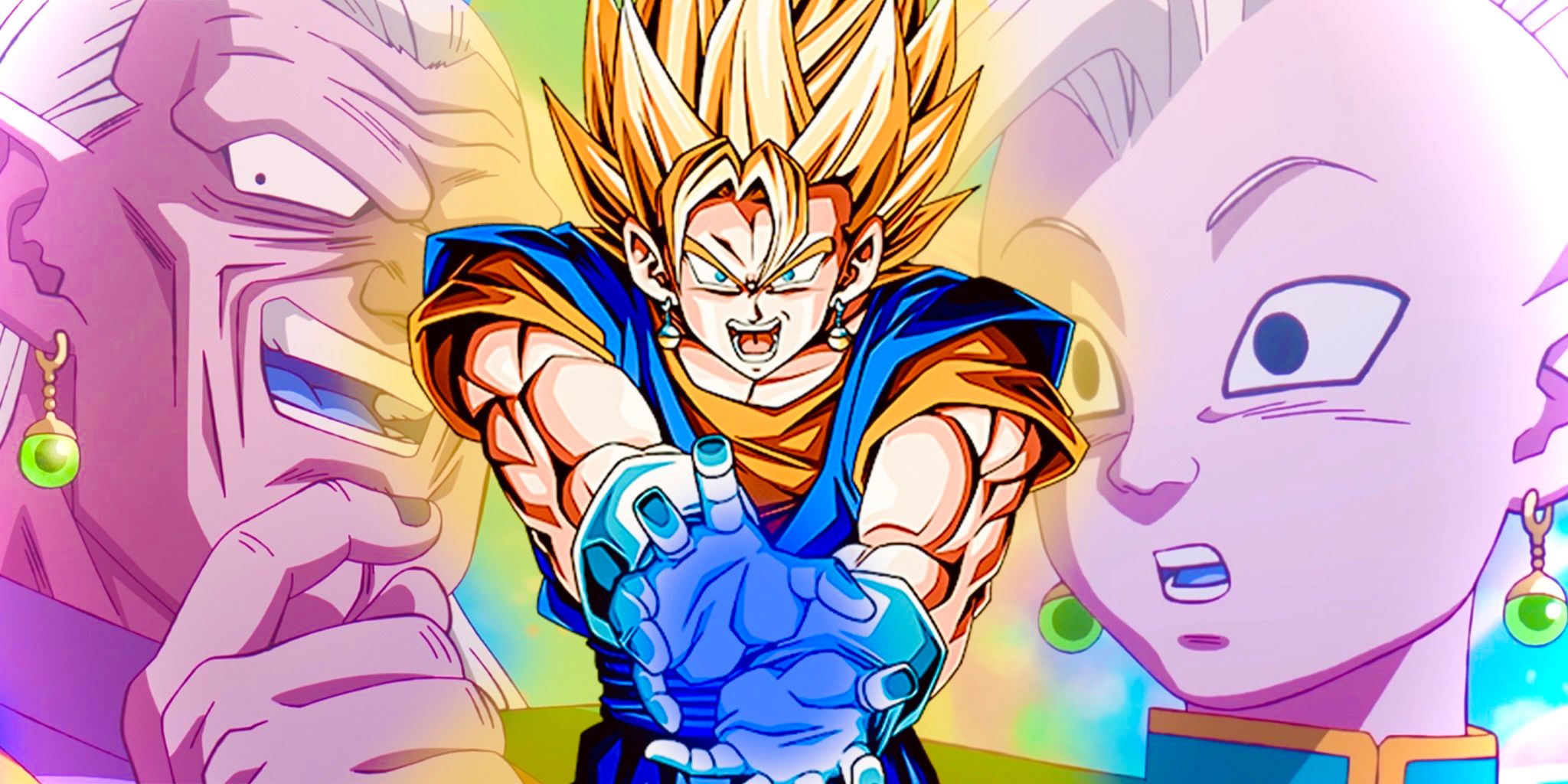
Related
Dragon Ball DAIMA Straight Up Retconned a Major Dragon Ball Super Retcon
DAIMA has already make shocking changes to Dragon Ball lore – including a retroactive revision of one the most important rules of fusion.
This also ties into the second major issue with GT being canon, and that’s the extreme down-grade in power-scaling. Super infamously opened with Goku and Beerus’ punches potentially destroying the Universe, but there’s no indication of anything near that level of power in GT. Again, even that issue could be hand-waved away because Super has a number of fights after the battle with Beerus that don’t destroy the Universe with each punch. Even so, Super’s scale of conflict remains an issue of Universal proportions, which is something that only the Shadow Dragon Saga really comes anywhere close to approaching.
A final reason GT does not fit into the continuity after Super is the storyline of GT itself. The entire events of GT occur when Emperor Pilaf seeks the Dragon Balls as an old man. This directly contradicts what happens in Super, in which the Pilaf Gang are turned into children. Of course, Pilaf could’ve somehow be turned into an old person using the Dragon Balls at the end of Super, but there’s no reason for that to be the case.
Toriyama originally intended Dragon Ball and Goku’s personal story to definitively end with the Peaceful World Saga. Still, there’e no real reason these continuity issues couldn’t be addressed in a revamp of GT by a new mangaka, making it more feasible to fit into the series’ canon. However, even if that were to happen, being that the series’ original creator won’t be able to have a direct role in the writing of that story, it’s place in canon would unfortunately always be called into question.
GT Being Non-Canon Doesn’t Mean it Doesn’t Matter
Dragon Ball GT is Still Essential Viewing For Any True DB Fan
Canonicity is always a hard thing to pin down, especially in a case such GT’s, where the series creator’s own words are somewhat vague and the owners of the franchise assert it as part of the timeline. There’s no denying that GT was originally intended by Toei to be part of the main continuity of the series, but that was before Akira Toriyama decided to expand his own Universe personally with Battle of Gods, Resurrection F, and finally Dragon Ball Super.
If anything, GT can be considered its own continuity that follows from the original anime series, but isn’t directly tied to Toriyama’s original manga story as expanded out through Super. In fact, the one who likely has the most power over what will be considered canon going forward will be Toriyama’s protege and the artist of the Dragon Ball Super manga, Toyotarou. The one way GT could be made canon (assuming DAIMA doesn’t already first) would be for Toyotarou to make it fit into the conclusion of the story in Dragon Ball Super. Toriyama handed the reigns of his magnum opus to Toyotarou, so it’ll be entirely up to him whether GT somehow fits in the long run.
Dragon Ball GT is a grand side-story of the original Dragon Ball, and it’ll make me happy for us to watch and enjoy it together.
Lucky for GT fans, Toyotarou is himself a massive fan of GT. Before working on Dragon Ball Super, Toyotarou drew the popular fan manga Dragon Ball AF, which borrowed heavily from GT. If there were any artist who might be most likely to make GT canon to the main storyline, it would be Toyotarou. However, until that happens, GT is still just as far from canon as it ever was – no matter what Shueisha’s anime timeline says.
Even if GT isn’t canon to Toriyama’s original manga, that doesn’t mean it’s not an important part of the series’ history. GT (particularly its latter arcs) still holds up quite well today, as its slightly darker tone fits in more with the Dark Shonen trend of modern series like Jujutsu Kaisen and Chainsaw Man. GT introduced incredible villains like Omega Shenron and Baby, and beloved designs like Super Saiyan 4 and teen Pan, and those contributions are not missed on the fandom. That’s why GT still remains relevant all these years later, and why fans were thrilled to see GT characters and forms included in the latest major Dragon Ball video game release, Sparking Zero. GT has already made its mark on Dragon Ball history, even though it’s still not officially canon – and may never be.
Discover more from reviewer4you.com
Subscribe to get the latest posts to your email.
